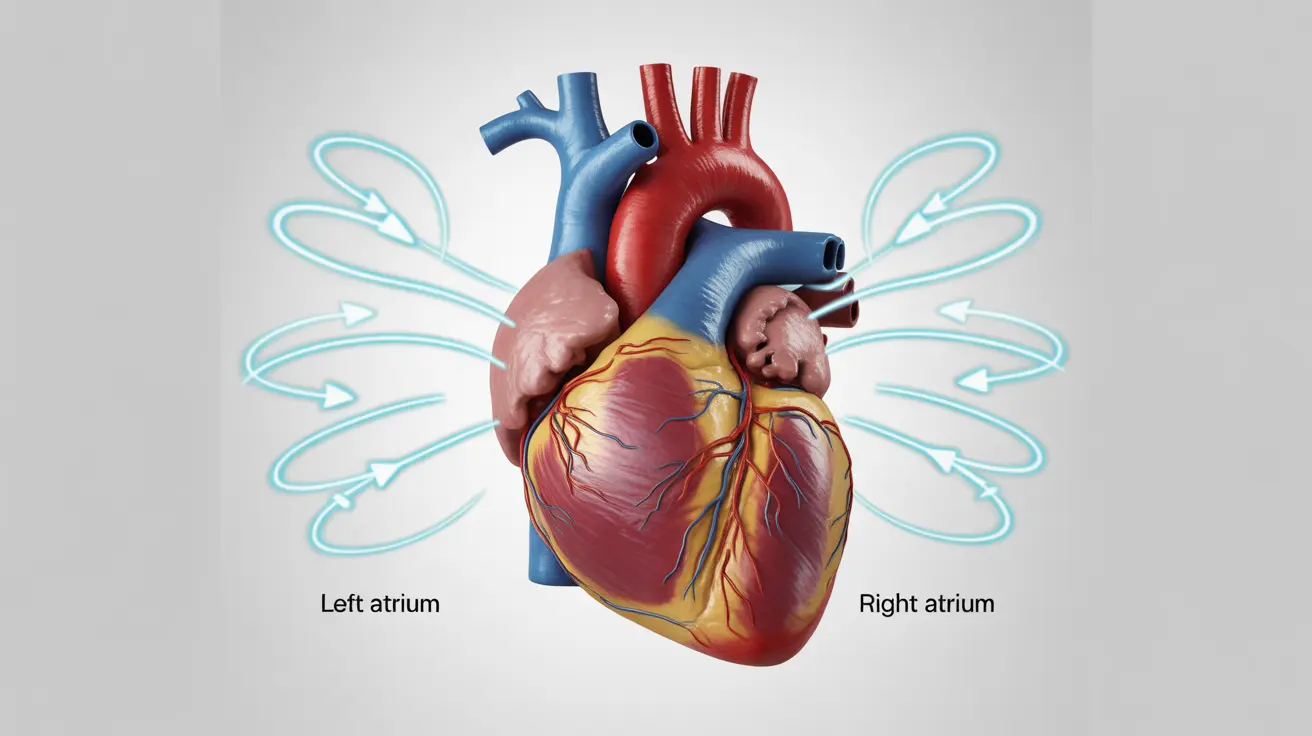Nonvalvular atrial fibrillation (NVAF) is a common type of irregular heartbeat that occurs when the heart's upper chambers beat chaotically and out of sync with the lower chambers. Unlike valvular atrial fibrillation, NVAF isn't caused by problems with the heart valves. Understanding this condition is crucial as it affects millions of people and can lead to serious complications if left untreated.
This comprehensive guide explores the essential aspects of nonvalvular atrial fibrillation, including its symptoms, causes, diagnosis, and treatment options. We'll also discuss important preventive measures to help reduce your risk of complications.
Understanding the Symptoms of NVAF
Recognizing the symptoms of nonvalvular atrial fibrillation is crucial for early detection and treatment. Common symptoms include:
- Irregular heartbeat or heart palpitations
- Shortness of breath, especially during physical activity
- Fatigue and weakness
- Dizziness or lightheadedness
- Chest pain or discomfort
- Reduced exercise tolerance
Some individuals may experience all of these symptoms, while others might have few or no noticeable signs. This variation makes regular medical check-ups particularly important, especially for those at higher risk.
Risk Factors and Causes
Several factors can contribute to the development of nonvalvular atrial fibrillation:
- Advanced age (65 years or older)
- High blood pressure
- Obesity
- Sleep apnea
- Diabetes
- Chronic lung disease
- Previous heart attacks
- Family history of AFib
Understanding these risk factors is essential for both prevention and management of the condition. Many of these factors can be modified through lifestyle changes and proper medical care.
Diagnostic Process
Healthcare providers use various methods to diagnose nonvalvular atrial fibrillation accurately:
Physical Examination and Medical History
Your doctor will conduct a thorough physical examination and review your medical history, including any symptoms you've experienced and your family health history.
Diagnostic Tests
- Electrocardiogram (ECG)
- Holter monitor
- Event recorder
- Echocardiogram
- Blood tests
Treatment Approaches
Treatment for nonvalvular atrial fibrillation typically involves a multi-faceted approach:
Medication Management
Various medications may be prescribed, including:
- Anticoagulants to prevent blood clots
- Rate control medications
- Rhythm control medications
- Anti-arrhythmic drugs
Lifestyle Modifications
Important lifestyle changes that can help manage NVAF include:
- Maintaining a healthy weight
- Regular exercise as approved by your doctor
- Limiting alcohol consumption
- Quitting smoking
- Managing stress effectively
Medical Procedures
In some cases, procedures may be necessary:
- Electrical cardioversion
- Catheter ablation
- Left atrial appendage closure
Stroke Prevention
People with nonvalvular atrial fibrillation have a significantly higher risk of stroke. Prevention strategies typically include:
- Regular use of prescribed blood thinners
- Consistent monitoring of blood pressure
- Regular medical check-ups
- Adherence to prescribed medications
- Lifestyle modifications
Frequently Asked Questions
- What are the common symptoms of nonvalvular atrial fibrillation?
Common symptoms include irregular heartbeat, shortness of breath, fatigue, dizziness, chest pain, and reduced exercise tolerance. However, some people may be asymptomatic.
- What causes nonvalvular atrial fibrillation and how can I reduce my risk?
NVAF can be caused by various factors including age, high blood pressure, obesity, and underlying health conditions. Risk reduction involves maintaining a healthy lifestyle, managing blood pressure, and regular medical check-ups.
- How is nonvalvular atrial fibrillation diagnosed by doctors?
Doctors diagnose NVAF through physical examination, medical history review, and various tests including ECG, Holter monitoring, and echocardiogram.
- What are the treatment options available for managing nonvalvular atrial fibrillation?
Treatment options include medications (anticoagulants, rate control, and rhythm control drugs), lifestyle changes, and medical procedures such as cardioversion or catheter ablation.
- How can nonvalvular atrial fibrillation increase the risk of stroke and what preventive measures exist?
NVAF increases stroke risk by allowing blood to pool and form clots in the heart. Preventive measures include blood-thinning medications, regular monitoring, and lifestyle modifications to manage risk factors.




